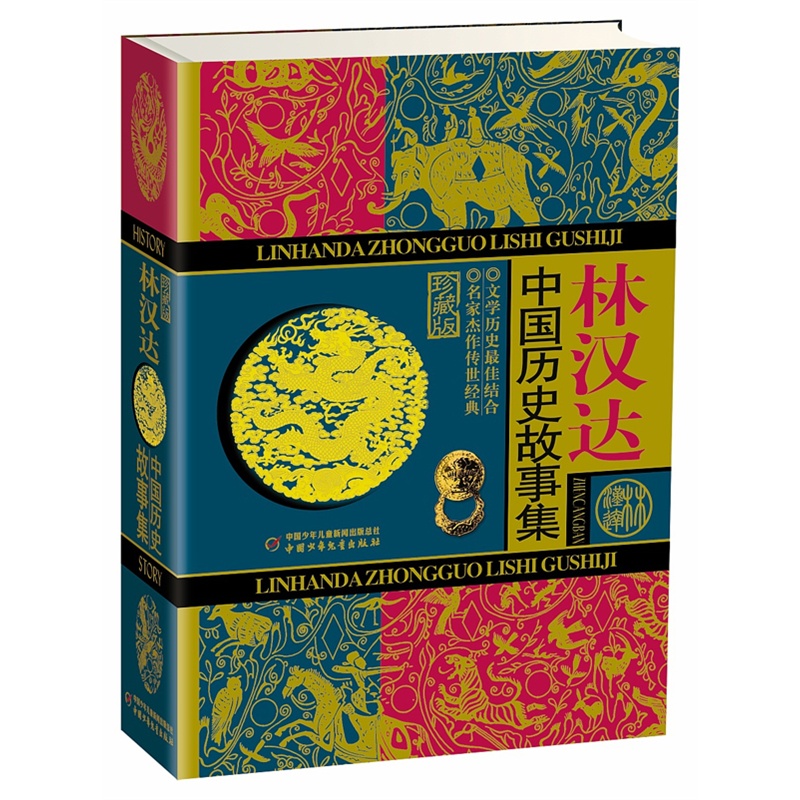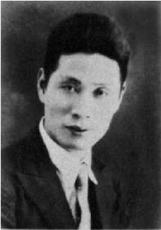
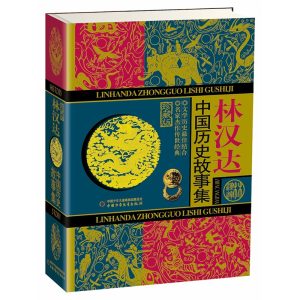
Mr. Lin Handa wrote extensively throughout his life, covering a wide range of fields including education, linguistics, and history. He was also a staunch democratic fighter and social reformer. The following is a chronology of his life:
- 1900
- February 17: Born in Longtouchang, Zhenhai County, Zhejiang Province (now Longshan Town, Cixi City), into an extremely poor tenant farmer family.
- 1907
- When he was seven years old, he was sent to study at the home of a landlord named Huang, five miles away from home, and earned his tuition and food by doing odd jobs.
- 1908
- He returned to his hometown and enrolled in a local private school, but he stopped studying for two years due to farm work.
- 1913
- When he was thirteen, his father planned to send him to be an apprentice. Later, with the help of his distant aunt, he entered Shangyu Chongren Primary School.
- 1914
- He entered the senior primary class of Ningbo Chongxin School (later renamed Chongxin Middle School).
- 1916
- Graduated from the primary school department of Ningbo Chongxin Middle School. Due to the high tuition fees, he worked as a teaching assistant at Guanhaiwei John Primary School for a year to save up tuition and study the first-year secondary school curriculum on his own.
- 1917
- With the accumulated tuition fees and self-study results, he was directly admitted to the second grade of Chongxin Middle School.
- 1919
- Graduated from Chongxin Middle School with excellent grades.
- After graduating from high school, he taught in Chongren Primary School and Chongxin Middle School for two years to save money for college.
- It coincided with the May Fourth Movement, which expressed strong dissatisfaction with Japan’s occupation of Chinese territory and ardent patriotic feelings.
- 1921
- He was admitted to Hangzhou Zhijiang University. Although he was late because he went to the wrong examination room, he was still admitted as an exception and directly promoted to the second year of university.
- 1924
- Before graduation: Participated as a student representative in the National College Students English Speech Contest sponsored by Shanghai World Bookstore, and won first place and a gold medal with the topic “War and Peace”, demonstrating excellent English speaking and thinking skills.
- Summer of the same year: Graduated from Zhijiang University.
- In the autumn of the same year: returned to Ningbo Siming Middle School (now Chongxin Middle School) as an English teacher.
- 1926
- Married to Xie Lilin.
- Influenced by the May 30th Movement, he began to read a large number of progressive books and began to develop communist ideas.
- 1928
- Autumn: Because of his sympathy for the revolution and his secret protection and rescue of progressive classmates such as Wang Xiaoming, he lost the trust of the pastor and was dismissed from the school.
- After that, he worked as an English editor at Shanghai World Bookstore, and was later promoted to director of the English editorial department and head of the publishing department.
- 1930
- He edited **“Standard English Reader” (three volumes) and “ABC of English Grammar”** (two volumes), published by Shijie Bookstore.
- 1931
- **“ABC of English Recitation”** was published.
- “Standard English Reader” was renamed **“English Standard Reader** and published.
- 1933
- “World Standard English-Chinese Dictionary” (edited by the Progressive English Society) was reprinted.
- 1934
- **“Standard Reader in Elementary English” and “Standard Reader in Senior High School English”** are three volumes published by Shijie Bookstore.
- 1937
- Autumn: With $500, he went to Colorado State University in the United States to study public education and conduct research on Chinese character reform.
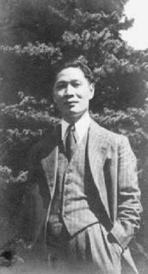
- 1939
- Fall: One year to earn a master’s degree, and another two years plus three vacations to earn a doctorate.
- His doctoral dissertation was titled **“The Relationship between the Development of Chinese Popular Education and the Reform of Chinese Characters.” Its core idea was to use the new Latinized characters as a tool to eliminate illiteracy. For this, he was awarded a Golden Key Award**.
- In the autumn of the same year, he resolutely returned to China and was hired as a professor at Zhijiang University, which had moved to Shanghai.
- 1941
- The educational theory work **“Challenging Traditional Education — Speech on Learning Psychology”** was officially published, posing a strong challenge to traditional Chinese and Western educational ideas.
- December: The Pacific War broke out. He continued his academic research during his isolated period in Shanghai, mainly conducting statistics on Latinized new language publications, editing the “National Language Pinyin Vocabulary” and starting to write popular Chinese history stories.
- 1942
- **“The Way Out for Chinese Phonetic Writing”** was published by Shijie Book Company and proposed a “simplified Mandarin romanization” plan.
- The single volume **“The Story of a Poor Boy and a Miserable Dog”** translated using the “Simplified Romanization Scheme” was published.
- 1943
- Xia Tian: Mr. Lin Handa presided over the School of Education of East China University. He broke the old rules and reduced tuition fees to allow primary and secondary school teachers to pursue further studies.
- 1944
- August: The research results of many years were named **“Connection Writing, Standardization, Tone Annotation, Division, Mandarin Phonetic Vocabulary”** and published by Shijie Bookstore.
- The School of Education of East China University added a course on the new Latinized Chinese characters and invited Qi Tiehen to teach.
- 1945
- Actively support and assist the Shanghai Huadong Model Middle School organized by Zhijiang University.
- November: Published an article titled “The Way Out for Primary School Teachers” in Teachers’ Life.
- December: The English petition letter was reviewed and submitted to Marshall.
- December 30: Together with Ma Xulun, Wang Shaoao, Xu Guangping and others, he founded the China Democratic League and was elected as its executive director.
- 1946
- January 1: Published the article **“Teachers’ Bunker”** in Teachers’ Life, calling on teachers to unite and organize a teachers’ union.
- January 2: Elected as the first director of the People’s Political Consultative Conference and later as an executive director.
- January 13: Attended the public memorial service for Martyr Yu Zai and delivered a speech.
- February 16: At the celebration meeting of the Shanghai “Student Aid Federation”, it was explained that the student aid movement was a victory of united struggle.
- March: Funded and supported Minben Middle School, founded by the underground Communist Party organization of Zhijiang University.
- June 23: He took the lead in participating in a mass rally of 100,000 people in Shanghai to see off representatives who were going to Beijing to oppose civil war and fight for democracy. He was elected executive chairman and delivered an impassioned speech.
- Shortly after the meeting, he was wanted by the reactionary Kuomintang government and temporarily took refuge in a friend’s house.
- August 31: Arranged by the underground Communist Party of China, he was transferred from Shanghai to the Northeast Liberated Area.
- From the autumn onward: In the Dalian area, he used the pseudonym Lin Tao and served as chairman of the Guandong Literary Association, director of the Dalian New Characters Association, and concurrently as editor-in-chief of Guanghua Bookstore. He actively lectured in Dalian’s intellectual circles, exposing the Kuomintang reactionaries’ dictatorship and was once shot by Kuomintang spies.
- 1947
- July: Lin Handa and his daughter went to the Northeast Liberated Area and then transferred to Harbin via North Korea.
- Autumn: During his tenure in the Dalian area, he personally compiled teaching materials and taught classes to train primary and secondary school teachers, and regularly held educational workshops for primary and secondary school teachers.
- 1948
- March: Appointed Minister of Education of Liaobei Province and Vice President of Liaobei University.
- He conducted in-depth investigations and research at the grassroots level, formulated a literacy work plan, and under the difficult conditions of only having three reference books on hand, spent three months compiling the **“Dual-Purpose Dictionary for Writing and Solving Problems”**.
- **“New Edition of the History of the Eastern Zhou Dynasty”**The first edition was published by Life Bookstore.
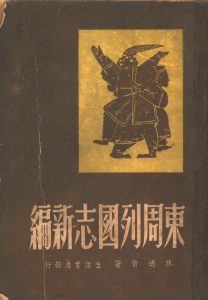
- 1949
- June 15: Attended the preparatory meeting of the Chinese People’s Political Consultative Conference and participated in the fourth group with Lei Jieqiong and others to undertake the work of drafting the “Organic Law of the Central People’s Government of the People’s Republic of China”.
- September 21: Attended the first plenary session of the Chinese People’s Political Consultative Conference held in the Huairen Hall of Zhongnanhai as a representative of the Democratic Progressive Party.
- October 1: Celebrated the founding of the People’s Republic of China with the leaders of the Republic on the Tiananmen Gate Tower.
- October: Appointed professor at Yenching University in Beijing, and later Dean of Academic Affairs.
- 1950
- November 24: Appointed Director of the Department of Social Education of the Ministry of Education of the People’s Republic of China.
- 1951
- Compiled the **“High School Standard English Reader”** (six volumes) for use in high schools.
- He translated the famous novel “David Copperfield” by British writer Dickens into easy-to-understand vernacular Chinese, and the first edition was published that year.
- December: The Chinese Character Reform Research Committee was established, with him as a member.
- 1952
- November 15: Appointed as Deputy Director of the National Literacy Committee and member of the Chinese Language Reform Commission.
- Conduct in-depth investigation into the effectiveness of the “Quick Literacy Method” in Chongqing.
- 1953
- Compiled the **Standard English Reader** (three volumes) for use in junior high schools.
- The translated **David Copperfield** was reprinted.
- May: **“English Translation: Principles, Methods and Examples**” was published by Zhonghua Book Company, elaborating on his translation theory.
- 1954
- Elected as a representative of the first National People’s Congress.
- October: Appointed as Vice Minister of the Ministry of Education.
- October: The Chinese Character Reform Commission became an agency directly under the State Council, and he became a member.
- December 26: Appointed as a member of the Chinese Phonetic Phonetic Committee of the Chinese Language Reform Commission.
- 1955
- January 28: Appointed as a member of the Central Committee for the Promotion of Putonghua.
- 1956
- Chun: Represented the Central Committee of the China Democratic League in the work of the Preparatory Committee for the Tibet Autonomous Region and served as deputy head of the Central Delegation.
- June: As a deputy to the National People’s Congress, he inspected education work in Ningbo and Cixi, and discovered that there was a lot of exaggeration in literacy work and that teachers were not valued.
- In the same year: Participated in the World Peace Conference in Helsinki, Finland.
- 1957
- May 22: A speech at a symposium held by the United Front Work Department of the CPC Central Committee was published in the People’s Daily, reflecting problems in literacy work and the lack of attention paid to education departments and small and medium-sized political parties.
- January: Labelled a “rightist”.
- 1958
- January: Labelled as a “rightist”.
- July 5: The State Council decided to remove him from his post as Vice Minister of Education.
- He was arranged to study at the Central Socialist College.
- February: The Fifth Session of the First National People’s Congress formally approved the **“Hanyu Pinyin Scheme**”.
- 1959
- **The Story of the Three Kingdoms** The first draft is completed.
- December: He was among the first group of people to have the label of “rightist” removed and worked as a researcher at the Chinese Language Reform Commission.
- 1961
- At the invitation of China Juvenile and Children’s Publishing House, he compiled **“Lin Handa’s Collection of Chinese Historical Stories**”.
- 1962
- “A New Edition of the History of the Eastern Zhou Dynasty” and “A New Edition of the Stories of the Eastern Zhou Dynasty” were re-edited and published by Zhonghua Book Company.
- China Juvenile & Children’s Publishing House selected his works and published them as **Spring and Autumn Stories** and **Warring States Stories**.
- 1962–1963
- “Stories of the Spring and Autumn Period”, “Stories of the Warring States Period” and **“Stories of the Western Han Dynasty”** were published one after another.
- 1963
- **“The Five Hegemons of the Spring and Autumn Period”** is published by Zhonghua Book Company.
- Compiled a series of English self-study books (three volumes, only the first volume was published).
- Second inspection of educational work in Ningbo and Cixi.
- 1966
- **“The Story of the Three Kingdoms”** is finalized.
- At the beginning of the Cultural Revolution, his home was ransacked three times by the Red Guards and rebels.
- “Standing aside” in the Language Reform Committee.
- 1967
- Xia Tian: Being locked up in the **“cowshed”** for isolation and investigation.
- 1969
- October: Ordered to be sent to the State Council-affiliated “May 7th Cadre School” in Pingluo, Ningxia, for forced labor.
- 1971
- End of the year: He was declared “liberated” and sent back to Beijing due to illness.
- 1972
- February: On the eve of US President Nixon’s visit to China, he was ordered to return to the “May 7th Cadre School”.
- June: Sent back to Beijing again due to serious illness.
- Early July: Premier Zhou Enlai commissioned him to revise the translated manuscript of Internationalism or Russification.
- Late night on July 24: Completed the proofreading task.
- July 26, 3:07 a.m.: Passed away due to cardiac arrest at the age of 72.
- 1978
- August: **New Edition of Stories of the Early and Late Han Dynasties (Volumes 1 and 2)** was published by Zhonghua Book Company.
- 1979
- **“Stories of the Three Kingdoms” (Volumes 1 and 2)** is published by the Children’s Publishing House.
- **“Stories of the Eastern Han Dynasty”** is published by China Juvenile and Children’s Publishing House.
- July 13: A grand memorial service was held in the auditorium of the Babaoshan Revolutionary Cemetery in Beijing, and the case was solemnly rehabilitated.
- October: Lin Handa’s half-finished book Five Thousand Years of Chinese History (later completed by Cao Yuzhang) is published and becomes a hit.
- 1982
- **“David Copperfield”**The revised edition is published by China Youth Publishing House.
- 1987
- June 23: The Shanghai Municipal Committee of the China Democratic League, the Shanghai Alumni Association of Zhijiang University, and others jointly held a memorial meeting for Comrade Lin Handa in Shanghai.
- 1988
- **“Lin Handa’s Collection of Chinese Historical Stories”** is published in full by China Juvenile and Children’s Publishing House.
- 2000
- August 20: The Democratic Progressive Party Central Committee held a symposium to commemorate the 100th anniversary of Mr. Lin Handa’s birth.
The main works of Lin Handa are listed as follows:
1. Historical Story Works
Mr. Lin Handa began writing popular history books during the Anti-Japanese War in the 1940s, for nearly 30 years.
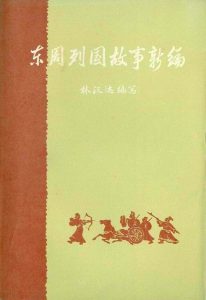
- New Edition of the History of the Eastern Zhou Dynasty
- It starts from the eastward migration of King Ping of Zhou and ends with the unification of China by King Ying Zheng of Qin, with a total of 180 historical stories and more than 460,000 words.
- The first edition was published by Life Bookstore in 1948.
- It was revised in 1956 and published by Sanlian Bookstore.
- In 1962, it was revised and renamed **“New Edition of Stories of the Warring States Period of the Eastern Zhou Dynasty”** and republished by Zhonghua Book Company.
- In the same year, China Juvenile and Children’s Publishing House selected it as the “Spring and Autumn Stories“and“Stories of the Warring States Period” was published.
- The Five Hegemons of the Spring and Autumn Period: Published by Zhonghua Book Company in 1963.
- New Edition of Stories of the Early and Late Han Dynasties (Volumes 1 and 2)
- It is a sister volume of “New Stories of the Warring States Period”, telling the history from Zhang Liang’s assassination of Qin Shi Huang to the ascension of Emperor Gaozu of Han to the throne.
- It contains 140 historical stories and more than 480,000 words, and was published by Zhonghua Book Company in August 1978.
- The Story of the Three Kingdoms (Volumes 1 and 2)
- Based on official histories such as “Records of the Three Kingdoms”, it covers the period from the Yellow Turban Rebellion of Zhang Jiao to the division of the country into three parts and its unification by the Jin Dynasty.
- There are 120 articles in total, about 510,000 words. The first draft was completed in 1959, the final draft was completed in 1966, and it was published by the Children’s Publishing House in 1979.
- Lin Handa’s Collection of Chinese Historical Stories
- Contains ** “Spring and Autumn Stories”、Warring States Stories、Stories of the Western Han DynastyandStories of the Eastern Han Dynasty**.
- It was compiled in 1961 at the invitation of China Juvenile & Children’s Publishing House. Among them, “Stories of the Spring and Autumn Period”, “Stories of the Warring States Period” and “Stories of the Western Han Dynasty” were published in 1962–1963, and “Stories of the Eastern Han Dynasty” was published in 1979. It was fully published by China Juvenile & Children’s Publishing House in 1988.
- Five Thousand Years of Chinese History
- Mr. Lin Handa only completed half of it, which is an incomplete manuscript, containing more than 50 stories from ancient times to the Eastern Han Dynasty, and more than 50,000 words.
- It was later continued by Mr. Cao Yuzhang and published in October 1979.
2. Educational Works
- Challenging Traditional Education: A Speech on Learning Psychology: This book was officially published in 1941 and posed a strong challenge to traditional educational ideas in China and the West.
- Lectures on the History of Western Education
III. Works edited or translated into English
Mr. Lin Handa served as the director of the English Editorial Department and the head of the Publishing Department of Shanghai World Book Company. During this period, he compiled many English textbooks and dictionaries, and translated many world classics.
- Translations
- Turgenev’s Prose Poems
- Selected Novels of Chekhov
- Humility(Works by Rabindranath Tagore)
- Selections from Shakespeare’s Tales(Written by Charles Timothy Marillam)
- Essential Reading Series for Beginners of English: The series has published 6 works, including “Fairy Stories”, “Alice’s Travels in a Foreign Land”, “Aesop’s Fables”, “One Hundred English Poems”, “Arabian Nights” and “Shakespeare’s Musical Stories”.
- David CopperfieldIn order to promote Mandarin, Mr. Lin Handa translated the famous work of British writer Dickens into easy-to-understand vernacular Chinese. The first edition was published in 1951, the second edition was published in 1953, and the revised edition was published by China Youth Publishing House in 1982.
- dictionary
- World Small English-Chinese Dictionary(Co-edited with Moritani Hito).
- World Standard English-Chinese Dictionary(Edited by the Progressive English Society, reprinted in November 1933).
- English textbooks
- English Recitation ABC(ABC series on using English effectively, published in 1931).
- The ABCs of English Grammar(Two volumes, published in 1930).
- Standard English Reader: A complete set of three volumes, published in 1930, later renamed **The Standard Reader in Englishand“Elementary English Standard Reader”**.
- High School English Standard Reader: A total of three volumes, published in 1934.
- After the founding of New China, he also compiled the **Standard English Reader for junior high school students.(three volumes, published in 1953) and for high schoolHigh School Standard English Reader(all six volumes, published in 1951), and a planned set ofEnglish Self-Study Series** (intended for three volumes, but only the first volume was published in 1963).
- Translation Theory
- English Translation: Principles, Methods, and Examples: This book was published by Zhonghua Book Company Limited in May 1953 and expounded his translation theory.
4. Works for Popularizing Public Education (Related to Chinese Character Reform)
These works mainly revolve around China’s writing reform and literacy efforts.
- PhD thesis:The Relationship between the Development of Chinese Popular Education and the Reform of Chinese Characters: The core idea of Mr. Lin Handa’s thesis when he was pursuing his doctorate at the Graduate School of Colorado State University in the United States was to use the new Latinized characters as a tool to eliminate illiteracy.
- The Future of Chinese Phonetic Writing: Published by Shijie Shuju in 1942, it proposed the “Simplified Mandarin Romanization” scheme.
- The Story of a Poor Child and a Miserable Dog: He once translated a single volume using the “Simplified Romanization Scheme”.
- Mandarin Pinyin Vocabulary:The “Mandarin Pinyin Vocabulary” was deeply sorted and studied, which took seven years and six revisions. Specific regulations such as continuous writing, standardization, tone annotation, and division were also formulated.
- Connected Writing, Standardized Forms, Tone Annotations, Divisions, and Mandarin Phonetic Vocabulary: Published by Shijie Book Company in August 1944.
- Mandarin Pinyin Textbook
- The Arrangement of Chinese Phonetic Writing
- A Dictionary for Writing and Solving Problems: He wrote it in 1948 in Liaobei Province for teachers and students who lacked learning tools, and completed it in just three months working at night.
